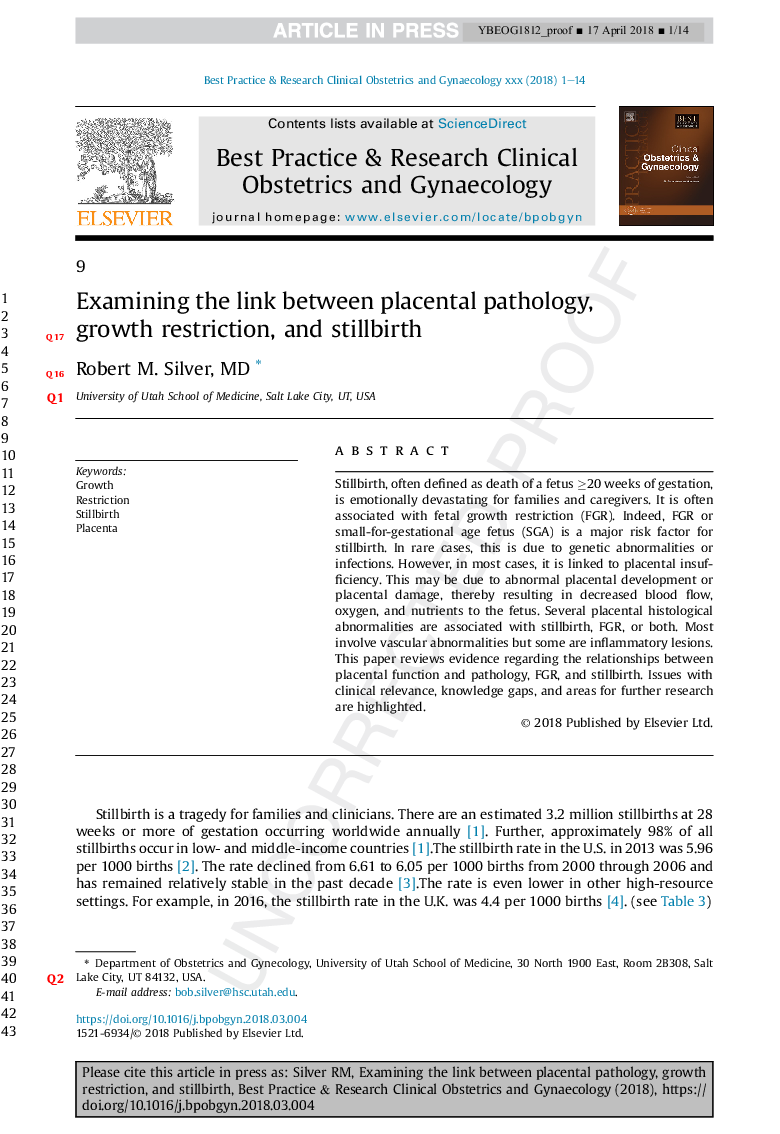| Article ID | Journal | Published Year | Pages | File Type |
|---|---|---|---|---|
| 8776493 | Best Practice & Research Clinical Obstetrics & Gynaecology | 2018 | 14 Pages |
Abstract
Stillbirth, often defined as death of a fetus â¥20 weeks of gestation, is emotionally devastating for families and caregivers. It is often associated with fetal growth restriction (FGR). Indeed, FGR or small-for-gestational age fetus (SGA) is a major risk factor for stillbirth. In rare cases, this is due to genetic abnormalities or infections. However, in most cases, it is linked to placental insufficiency. This may be due to abnormal placental development or placental damage, thereby resulting in decreased blood flow, oxygen, and nutrients to the fetus. Several placental histological abnormalities are associated with stillbirth, FGR, or both. Most involve vascular abnormalities but some are inflammatory lesions. This paper reviews evidence regarding the relationships between placental function and pathology, FGR, and stillbirth. Issues with clinical relevance, knowledge gaps, and areas for further research are highlighted.
Keywords
Related Topics
Health Sciences
Medicine and Dentistry
Obstetrics, Gynecology and Women's Health
Authors
Robert M. MD,
